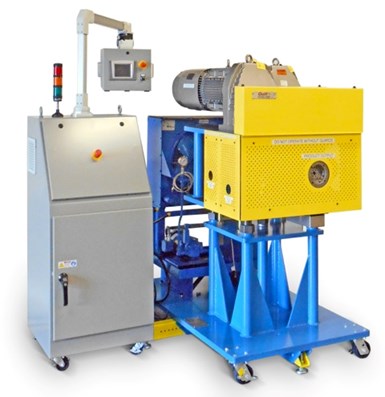Rotating Tubing Dies Increase Wall Strength
New design of rotary inline or crosshead dies feature speeds to 1000 rpm.
Guill Tool has developed a new design for its high-production rotary models, both inline and crosshead style. The die offers a two-time increase in speed, with models running to 1000 rpm depending on the application. According to Guill, rotating the tooling in relation to the material flow increases the wall strength of an extrusion, thereby allowing a thinner wall with less material and the corresponding cost savings for the user. Typical applications for rotary heads include medical and multi-lumen tubing plus various high-end extrusions with interlocking layer or multiple striping requirements.
Features offered on these new rotating extrusion dies include counter-rotating tip and die, co-rotating tip and die, rotating die with conventional tip, rotating tip with conventional die, crosshead or inline, multi-layer, striping, certain profiles and optional quick-change cartridges that minimize cleaning downtime.

Guill maintains that using rotary dies also lets extrusion processors cut costs by making secondary processes unnecessary, improves the cosmetics of the end product by eliminating weld or parting lines, and reduces if not eliminates ovality.
Guill Tool offers its new high-speed rotary models as turnkey packages, complete with die cart, tools and all accessories for installation and maintenance.
Related Content
-
Single vs. Twin-Screw Extruders: Why Mixing is Different
There have been many attempts to provide twin-screw-like mixing in singles, but except at very limited outputs none have been adequate. The odds of future success are long due to the inherent differences in the equipment types.
-
Why Are There No 'Universal' Screws for All Polymers?
There’s a simple answer: Because all plastics are not the same.
-
Medical Tubing: Use Simulation to Troubleshoot, Optimize Processing & Dies
Extrusion simulations can be useful in anticipating issues and running “what-if” scenarios to size extruders and design dies for extrusion projects. It should be used at early stages of any project to avoid trial and error and remaking tooling.


